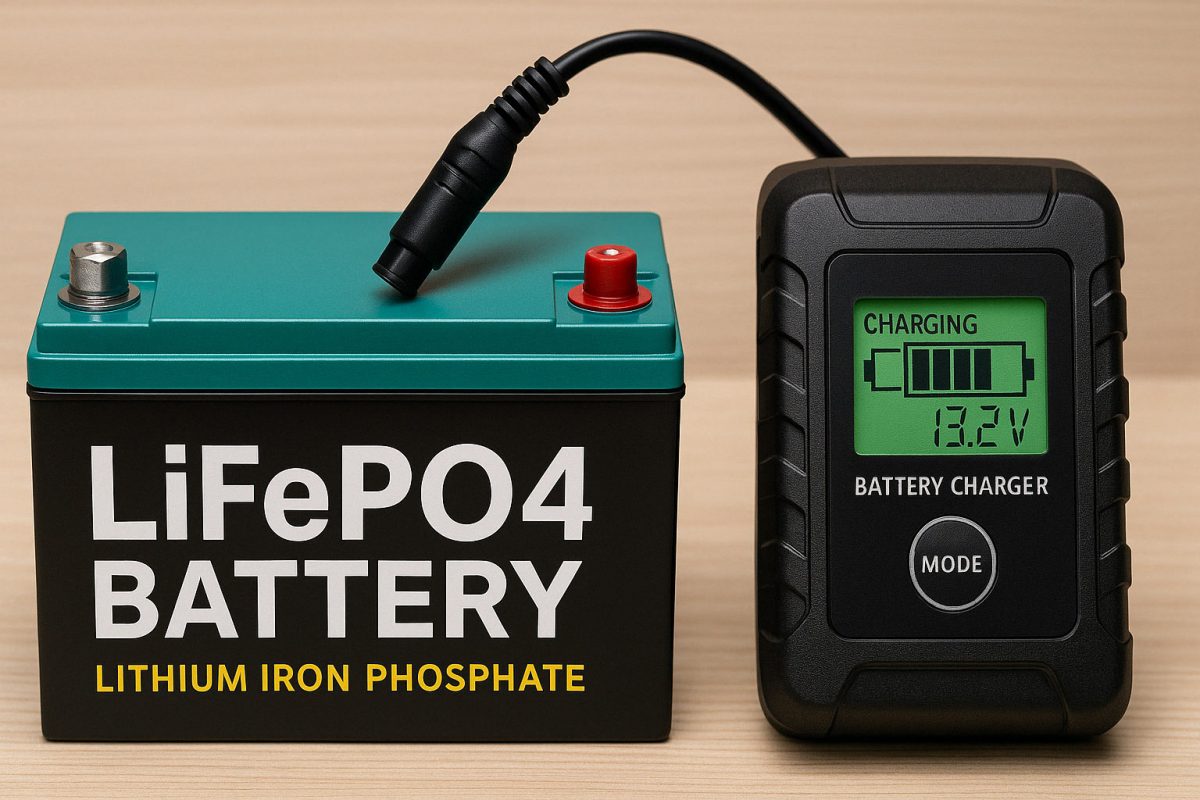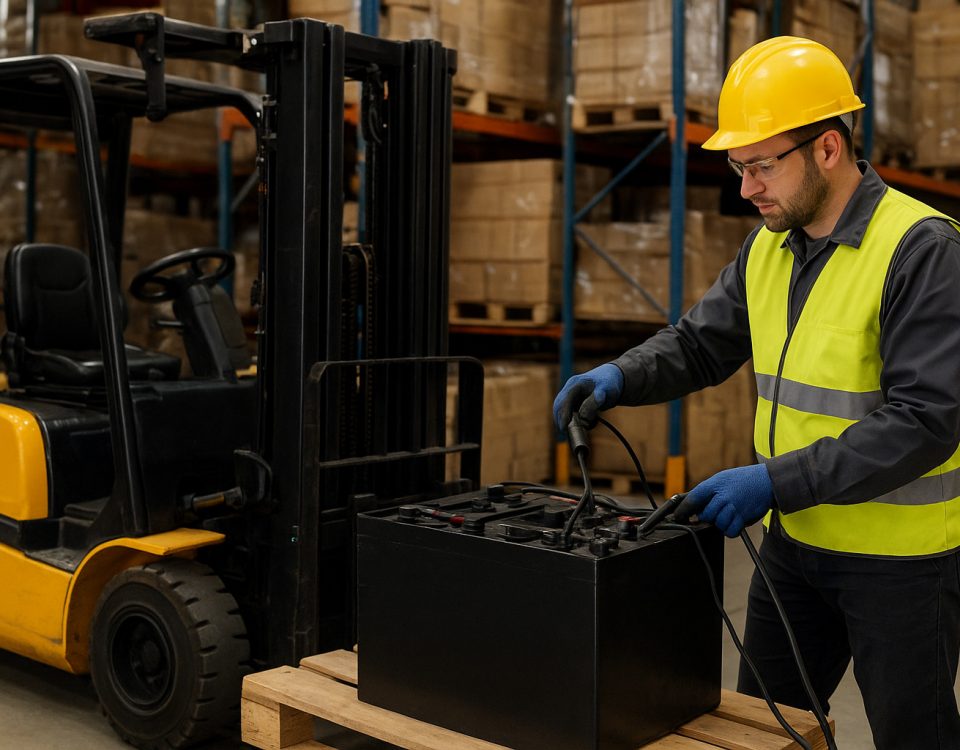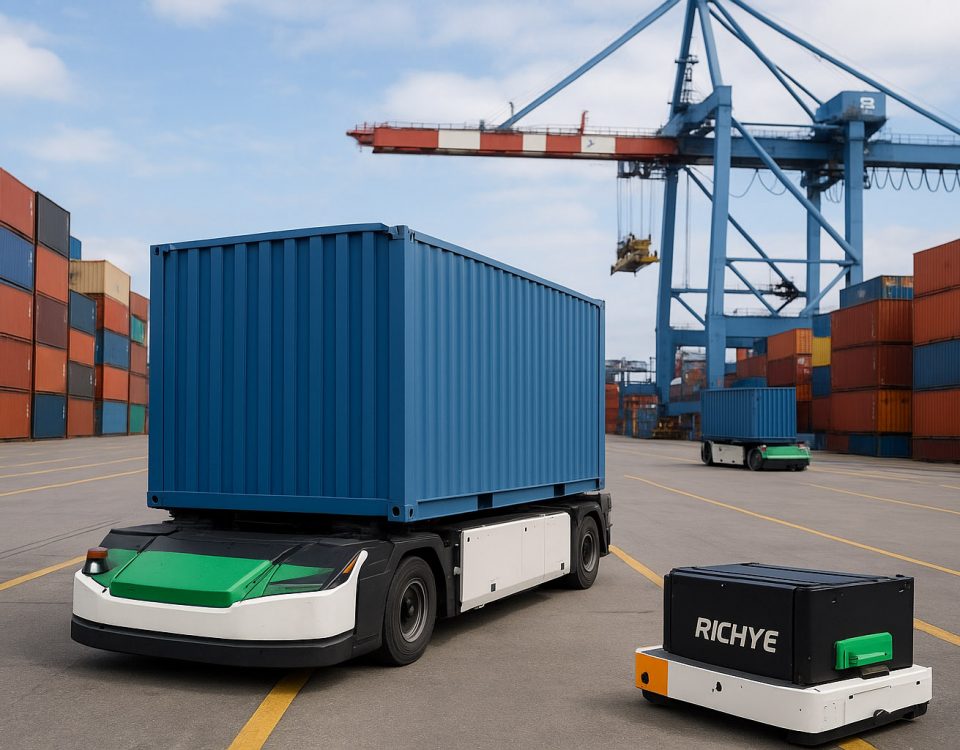Negli ultimi anni, le batterie al litio-ferro-fosfato (LiFePO4) sono diventate molto popolari per diverse applicazioni, dai sistemi di energia rinnovabile ai veicoli elettrici, fino alle configurazioni off-grid e ai camper. La loro durata, la sicurezza e la lunga durata dei cicli le distinguono dalle tradizionali batterie al piombo e da altre batterie alcaline. batterie agli ioni di litio. Tuttavia, per sfruttare appieno questi vantaggi, è fondamentale comprendere e rispettare i requisiti di ricarica corretti. Questo articolo approfondisce le specifiche della carica delle batterie LiFePO4, offrendo approfondimenti sulle migliori pratiche, consigli pratici e dettagli tecnici che possono aiutare a ottimizzare le prestazioni e la longevità.
Cosa distingue le batterie LiFePO4?
Le batterie LiFePO4, comunemente chiamate batterie LFP, presentano notevoli vantaggi:
-
Sicurezza e stabilità: Grazie alla loro composizione chimica, le batterie LiFePO4 sono meno inclini al surriscaldamento e alla fuga termica. La loro struttura stabile le rende un'opzione più sicura per l'accumulo di energia in casa e per le applicazioni mobili.
-
Ciclo di vita prolungato: Queste batterie possono in genere sopportare da 2000 a 4000 cicli di carica/scarica, rispetto ai 300-500 cicli delle tradizionali batterie al piombo-acido.
-
Vantaggi ambientali: Sono più rispettosi dell'ambiente, con un'impronta ecologica ridotta sia in fase di produzione che di smaltimento.
-
Efficienza: Le batterie LiFePO4 presentano un'elevata efficienza di carica/scarica, il che significa che una parte maggiore dell'energia immagazzinata è effettivamente utilizzabile.
Nonostante questi vantaggi, le loro prestazioni e la loro durata possono essere influenzate in modo significativo dal processo di ricarica. Per questo motivo, è essenziale comprendere i loro requisiti di ricarica.
Comprendere il processo di addebito
Il processo di tariffazione per Batterie LiFePO4 è suddiviso in diverse fasi, ognuna con una propria serie di parametri. In genere, queste fasi comprendono:
-
Fase di carica in blocco:
Durante questa fase, la batteria viene caricata con una corrente relativamente alta fino a raggiungere circa l'80-90% della sua capacità. La carica di massa è efficiente e consente alla batteria di raggiungere rapidamente la piena capacità. -
Fase di carica di assorbimento:
Quando la batteria raggiunge la soglia, la corrente di carica viene ridotta. La tensione viene mantenuta costante mentre la batteria continua a caricarsi lentamente, assicurando che la capacità residua venga riempita in modo controllato senza surriscaldamento. -
Fase di carica del galleggiante/triangolo:
Questa fase finale mantiene la batteria a piena carica senza sovraccaricarla. Per le batterie LiFePO4, questa fase viene spesso omessa poiché queste batterie non richiedono una carica flottante prolungata come le batterie al piombo; in genere vengono caricate fino a 100% e poi scollegate o mantenute a una tensione inferiore.
Ognuna di queste fasi deve essere gestita con attenzione per garantire la salute e l'efficienza della batteria.
Parametri di carica consigliati
Tensione di carica
Per le batterie LiFePO4, la tensione di carica raccomandata è fondamentale:
-
Per cella Tensione: In genere tra 3,45V e 3,65V per cella.
-
Tensione della batteria: Per un pacco batteria configurato con celle in serie, la tensione di carica totale è data dalla tensione della cella moltiplicata per il numero di celle. Ad esempio, una batteria LiFePO4 da 12 V (che può essere composta da 4 celle in serie) dovrebbe essere caricata a circa 13,8 - 14,6 V.
Il rispetto di questi livelli di tensione è essenziale, poiché una sovratensione può ridurre la durata di vita della batteria o addirittura causare problemi di sicurezza.
Corrente di carica
La corrente di carica è solitamente espressa come frazione o multiplo della capacità della batteria (tasso C). Per le batterie LiFePO4:
-
Ricarica di massa: Un approccio comune è quello di caricare a una corrente compresa tra 0,5C e 1C, dove 1C equivale alla capacità nominale della batteria in ampere. Ciò significa che una batteria da 100Ah può essere caricata con una corrente compresa tra 50 e 100 ampere, anche se in genere si consiglia di caricarla a un livello inferiore per garantirne la longevità.
-
Fase di assorbimento: Nella fase di assorbimento, la corrente diminuisce gradualmente man mano che la batteria si avvicina alla carica completa.
-
Considerazioni sulla sicurezza: È importante evitare correnti di carica troppo elevate, che possono causare surriscaldamento e danni.
Considerazioni sulla temperatura
La temperatura gioca un ruolo importante nelle prestazioni della batteria:
-
Intervallo di temperatura ottimale: Le batterie LiFePO4 funzionano al meglio se caricate a una temperatura compresa tra 0°C e 45°C (32°F e 113°F). La ricarica a temperature inferiori allo zero può causare la placcatura del litio, che riduce la capacità e la durata del ciclo.
-
Compensazione della temperatura: Alcuni caricabatterie avanzati prevedono la compensazione della temperatura, regolando la tensione in base alle condizioni ambientali. Ciò è particolarmente vantaggioso in climi con forti oscillazioni di temperatura.
-
Raffreddamento e ventilazione: Assicurarsi che le custodie delle batterie offrano una ventilazione o un raffreddamento adeguati per evitare l'accumulo di calore durante la carica.
Migliori pratiche per la ricarica delle batterie LiFePO4
Utilizzare un caricabatterie compatibile
È fondamentale utilizzare un caricabatterie appositamente progettato per Batterie LiFePO4. Questi caricabatterie sono programmati per rispettare la tensione, la corrente e il profilo di carica corretti per la chimica LiFePO4. L'uso di un caricabatterie generico può causare un sovraccarico o un sottocarico.
Monitoraggio del processo di carica
Investire in un monitor della batteria di qualità consente di monitorare tensione, corrente e temperatura in tempo reale. Questo non solo assicura che la batteria venga caricata correttamente, ma aiuta anche a diagnosticare tempestivamente potenziali problemi.
Manutenzione e ispezione regolari
Sebbene le batterie LiFePO4 richiedano poca manutenzione, si raccomanda comunque di effettuare ispezioni periodiche:
-
Verificare la presenza di danni fisici: Ispezionare regolarmente le batterie per rilevare eventuali segni di rigonfiamento, perdite o danni fisici.
-
Pulire i terminali della batteria: Assicurarsi che i collegamenti siano puliti e privi di corrosione.
-
Aggiornamenti del firmware: Se il vostro sistema di ricarica include funzioni intelligenti, tenete aggiornato il firmware per beneficiare delle ultime ottimizzazioni delle prestazioni e dei miglioramenti della sicurezza.
Evitare la scarica profonda
Le batterie LiFePO4 funzionano al meglio quando non si scaricano profondamente. Cercare di mantenere uno stato di carica (SoC) compreso tra 20% e 80% durante il funzionamento regolare. Le scariche profonde possono ridurre la durata complessiva della batteria, anche se le batterie LiFePO4 sono più tolleranti rispetto ad altre chimiche.
Integrazione di sistemi di energia rinnovabile
Per molti utenti, le batterie LiFePO4 fanno parte di un più ampio sistema di energia rinnovabile:
-
Integrazione dei pannelli solari: I sistemi di energia solare sono un ottimo abbinamento per le batterie LiFePO4 grazie alla loro efficienza e alla lunga durata del ciclo. Un sistema solare ben progettato, abbinato a batterie LiFePO4, può fornire un'alimentazione off-grid affidabile.
-
Controllori di carica: Utilizzare regolatori di carica specificamente configurati per le batterie LiFePO4. Questi dispositivi aiutano a regolare il processo di carica, assicurando che sia l'apporto solare che la carica della batteria rimangano all'interno dell'intervallo ottimale.
-
Gestione dell'energia: L'implementazione di un sistema di gestione dell'energia può aiutare a ottimizzare l'uso complessivo dell'energia, riducendo la dipendenza dalla rete e massimizzando i contributi solari.
L'azienda Richye: Un punto di riferimento per l'eccellenza delle batterie
Quando si parla di soluzioni di batterie ad alte prestazioni, è impossibile non menzionare RICCO. In qualità di rinomato produttore di batterie al litio, RICCO è rinomata per il suo impegno verso la qualità, le prestazioni e la sicurezza. Le sue batterie LiFePO4 sono progettate per soddisfare standard rigorosi, offrendo un'affidabilità eccezionale sia per l'accumulo di energia rinnovabile, che per i veicoli elettrici o le applicazioni off-grid. Grazie a prezzi competitivi e a un rigoroso controllo di qualità, RICHYE è diventato un nome di fiducia, che garantisce che le vostre esigenze energetiche siano soddisfatte con eccellenza.
Conclusione
La corretta ricarica delle batterie LiFePO4 è fondamentale per massimizzarne le prestazioni, la durata e la sicurezza. Rispettando i parametri di tensione e corrente raccomandati, assicurando una corretta gestione termica e utilizzando sistemi di ricarica compatibili, è possibile sfruttare appieno i numerosi vantaggi offerti dalle batterie LiFePO4. Sia che si tratti di integrare queste batterie in un sistema di accumulo energetico domestico, di alimentare un camper o di realizzare una configurazione off-grid, la comprensione di questi requisiti di carica è fondamentale per il successo a lungo termine.
Questa guida completa fornisce spunti pratici direttamente applicabili a scenari reali. Con una gestione accurata, una manutenzione regolare e l'attenzione ai dettagli, potete garantire che il vostro Batteria LiFePO4 Il sistema rimane robusto e affidabile per gli anni a venire. Investire in prodotti di qualità, come quelli fabbricati da RICHYE, vi assicura ulteriormente di essere dotati degli strumenti migliori per uno stoccaggio di energia sostenibile ed efficiente.
Seguendo le pratiche sopra descritte, non solo ottimizzerete l'uso delle batterie, ma contribuirete anche a un futuro più sostenibile, in cui efficienza energetica e gestione responsabile vanno di pari passo. Con l'aumento della domanda di soluzioni di energia rinnovabile, la padronanza delle complessità della carica delle batterie LiFePO4 sarà sempre più importante sia per i consumatori che per i professionisti.




